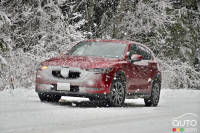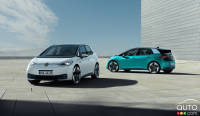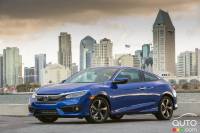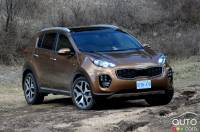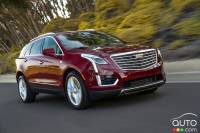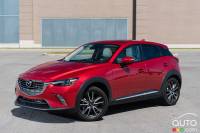It was a common belief, just a few years ago: Once car buyers switch to an electric vehicle, they never want to go back. The draws were obvious: a dynamic ride, zero gasoline bills, a healthy conscience, to name just those.
That belief is still commonly cited in some parts of Canada, like British Columbia and Quebec, where uptake of electric vehicles is strongest, and where interest is generally greatest.
In some major U.S. cities, it's probably the same thing, but when you look at it on a national scale, the results are different.
According to a study by McKinsey & Co, 40 percent of current EV owners will probably buy an ICE model for their next vehicle. The glass half-full response to that is that 60 percent are sold on the format and will continue on with EVs. Still, the study's conclusions are surprising.
"I didn't expect that. I thought: Once an EV buyer, always an EV buyer," Philipp Kampshoff, Director of the Center for Future Mobility, told Automotive News.

Clearly, it's not because motorists want to go back to spending money on fuel. One of biggest reasons for wanting to switch back? Problems with recharging in their region. Simply, public charging infrastructure remains insufficient.
Many respondents also expressed concern about the high cost of vehicles and the negative impact on being to undertake long-distance travel.
In the United States, the pace of deployment of a government-backed charging network has been slow. Only eight stations have become operational since the creation of the National Electric Vehicle Infrastructure Program two years ago.
Privately installed charging stations exist, but their availability varies from place to place. What’s more, many of them are poorly indicated and hard to find in comparison with gas stations, marked on huge singposts near highway exits all across North America.
Only 23 states have begun distributing funds from the $5 billion federal program, according to EVAdoption data as of the end of May.
According to Kampshoff, the problem is set to grow. “The next generation of electric vehicle buyers will rely on public charging much mre than the current one.”
Among other charging-related findings, McKinsey’s study also found that 21 percent of respondents surveyed worldwide are not currently interested in switching to an electric vehicle. 33 percent of those respondents cited worries about recharging.

Range anxiety, a persistent condition
Vehicle range continues to be a concern. What's fascinating in that respect, is that the number of kilometers that makes a buyer feel reassured about their vehicle's capacity has increased over the years. In 2022, 435 km was said to be sufficient to placate many skittish EV buyers; today the threshold is 465 km.
Let's just say that the argument is easy to make, and it's also easy to be eternally dissatisfied when you're reluctant.
Any positives?
There are some positive takeaways from McKinsey's biennial survey, which asked some 200 questions of over 30,000 respondents across 15 countries, which collectively account for over 80 percent of global sales of vehicles.
What emerges is that, overall, consumers are slightly more willing to consider electrified vehicles than they were two years ago. In fact, 38 percent of non-electric vehicle owners say they expect a plug-in hybrid or electric vehicle to be their next vehicle; that’s up marginally from the 37 percent of two years ago.
It’s also fair game to fall back on the glass half-full argument, that 60 percent of EV owners are happy and will stick to electric. We're guessing many of those folks have easy access to public charging stations, if not their own at home.







